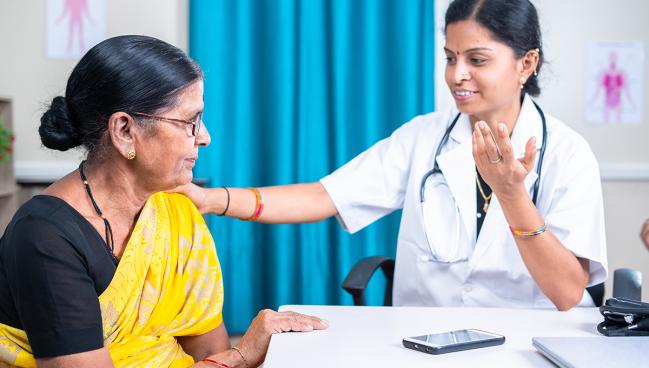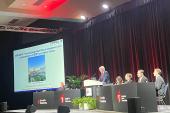Many ESC Guideline Recommendations Out of Reach in Poorer Regions
In low-income countries, for instance, nearly 30% of treatments recommended by the ESC were not available to physicians.

(UPDATED) Actions recommended in multiple European guidelines—directives to provide a pharmaceutical intervention or to order a diagnostic or laboratory test, for example—are not widely available in many middle- and lower-income countries, according to a new study.
Not surprisingly, these recommended actions weren’t available mostly due to financial reasons, such as a lack of insurance coverage/reimbursement or a cost too high for the institution or patient, report investigators.
“The present study shows that despite the aspiration to develop guidelines that are globally applicable, overall, cardiovascular guidelines do not meet this standard,” Wouter van Dijk, MD (University Medical Center Utrecht, the Netherlands), and colleagues write in a study published online recently in the European Heart Journal. “With an estimated 90% of global CVD burden placed in [low-to-middle-income countries] representing less than 10% of global resources, it is important to support these countries with suitable strategies to reduce and manage CVD risks.”
Senior investigator Diederick Grobbee, MD, PhD (University Medical Center Utrecht), who has served as a member of the European Society of Cardiology (ESC) committee for clinical practice guidelines and chair of the global affairs committee, said they had been aware that some of the guideline recommendations were just not available to physicians in some countries and that this may be the source of some friction.
“The ESC is really aspiring to be a global guideline society promoting cardiovascular health across the world,” Grobbee told TCTMD. “If the guidelines, which are sort of the Holy Grail of the ESC, don’t land effectively, they might perhaps create some frustration because people can’t reach for these recommendations. They might be working adversely.”
Low-Income Countries Hardest Hit
The new analysis pulls together recommendations from ESC clinical practice guidelines in diabetes, prediabetes, and CVD; noncardiac surgery; CVD prevention; dyslipidemias; CVD during pregnancy; arterial hypertension; and syncope.
From these guidelines, there were 875 recommendations, of which the investigators identified 139 different actions that physicians were advised to take. Most of the actions required a pharmaceutical intervention (n = 38), diagnostic noninvasive testing (n = 18), or laboratory testing (n = 18). For 91 recommendations, there wasn’t a specific action attached as they largely included policy statements or disease definitions.
A survey of the recommended actions was sent to 102 ESC national and affiliated cardiac societies, and respondents were asked to score the recommended actions on their availability in clinical practice (fully available, mostly/often available, mostly/often unavailable, and fully unavailable). For example, the survey asked about the availability of various antihypertensive drugs, platelet inhibitors/anticoagulants, and lipid-lowering drugs, as well as minimally invasive procedures, such as PCI, TAVI, and catheter ablation for atrial fibrillation, among many others.
There should be a plan B for settings where plan A is just not applicable. Diederick Grobbee
Overall, 71.6% of the clinical actions were fully available to physicians and patients. Another 9.9% of the recommended actions were mostly available. In total, 6.7% and 11.8% of the recommendations couldn’t be performed because they were mostly or fully unavailable, respectively, in that country. When the actions required an intervention or a diagnostic test, 69.1% and 75.9%, respectively, were fully available in the surveyed countries.
The actions available to physicians were strongly correlated with the country’s gross national income, with availability of the various actions decreasing significantly as income levels declined. For example, just 2.4% of the recommended actions were fully unavailable in high-income countries (> $12,055 per capita) compared with 29.4% in low-income countries (< $996 per capita). In upper-middle-income and lower-middle-income countries, 4.7% and 10.6% of the ESC actions, respectively, were fully unavailable. Across regions, Africa had the highest percentage of fully unavailable ESC actions (15.4%), followed by Asia and the Pacific (6.6%).
“Unfortunately, we weren’t really surprised by the findings based on speaking with colleagues around the world, in particular in the global south,” said Grobbee. “I think it’s sobering to learn that the best might be the enemy of the good, which also applies to the guidelines.”
Grobbee pointed out that several pharmaceutical interventions simply weren’t available for physicians, and these tended to be newer agents that weren’t reimbursed either by the national healthcare system or governing bodies that regulate what’s available. “The upper range of drugs, those in the higher cost category, they were invariably not available even though recent evidence may suggest they are the best options for patients,” he said. “Because they’re new, they’re also expensive, and when they’re expensive, they’re just not accessible. It doesn’t only apply to the lower end of the economic scale, but also the middle part as well.”
Dhruv Kazi, MD (Beth Israel Deaconess Medical Center and Harvard Medical School, Boston, MA), who wasn’t involved in the study, said there are different ways to interpret its results. While some of the clinical directives aren’t available in certain countries, on the whole more than 70% of the recommended tests and interventions are fully available globally.
“It makes the case that a lot of our diagnostics and interventions, in fact some of the most effective ones, are really low-cost interventions,” Kazi told TCTMD. “In cardiology, we’re a little bit privileged in that a lot of our interventions are universally available.”
Taking a 20,000-foot view of the problem, Kazi believes one of the biggest issues with the guidelines right now comes down to implementation. For example, beta-blockers, ACE inhibitors/ARBs, and mineralocorticoid receptor antagonists are cheap, effective medications for heart failure, yet rates of use in many countries are less than 10% for all three drugs.
“Cost is really important, but it’s not the only barrier,” he said. “Rather than thinking about calls for country-specific guidelines, maybe it’s a time for country-specific implementation plans.”
In cardiology, we’re a little bit privileged in that a lot of our interventions are universally available. Dhruv Kazi
Rishi Wadhera, MD (Beth Israel Deaconess Medical Center and Harvard Medical School), said that even in the United States, which wasn’t one of the countries surveyed, there is a wide discrepancy around access to guideline-recommended therapy, as many adults face cost-related barriers to care.
Nearly 30 million Americans lack health insurance and nearly one-third under age 65 have a gap in insurance coverage or are inadequately insured. As such, many have high deductibles or out-of-pocket costs relative to their income. Even when insured by Medicare, there are gaps in coverage—the so-called donut hole that occurs when they spend more than $4,400 annually on prescription drugs—that can expose patients to catastrophic costs, said Wadhera.
“Our increasingly complex healthcare system makes it incredibly challenging for many patients to afford the prescription medications they need to stay healthy,” he said.
Regionalized Clinical Guidelines
In terms of what needs to happen next, Grobbee said the ESC guidelines should be “contextualized.”
“Once you have the evidence sorted out, you need to sit down with representatives from different regions to see whether the evidence is not only scientifically valid but also feasible in that context,” he said. “It may be that in some circumstances, what is perhaps scientifically the best is not the best for that setting because it won’t reach sufficient numbers of patients and therefore [will] not achieve its aims.”
That would mean recommendations for care that is best for patients within the financial constraints of that region. The ESC is aware of the difficulties some countries have when it comes to accessing guideline-recommended treatments and is making plans to help these countries provide the best care possible. “There should be a plan B for settings where plan A is just not applicable,” said Grobbee. “My hope is that this study provides a stimulus to think about this and eventually come up with recommendations that reach larger populations.”
There is a perception that clinical guidelines developed by the American College of Cardiology, the American Heart Association, and the ESC are “Ivy League” recommendations that aren’t relevant to different regions around the world, particularly those that aren’t as wealthy, said Kazi. For that reason, there are often requests from representatives from different countries to adapt or modify the clinical guidelines for specific regions.
However, that’s a really tough ask.
“Writing guidelines is hard enough,” Kazi told TCTMD. “Adapting to local contexts is an entirely different and difficult problem, so most organizations have decided to steer clear of these official adaptations. In practice, you can see that people will apply the guidelines based on what’s feasible in their local context.”
Kazi said the new analysis has limitations, noting that it’s a survey, often with a single representative speaking on behalf of an entire country. “That’s important because as much as we highlight between-country differences, within-country differences are also very stark,” he said.
For example, the study reports that most diagnostic and interventions are available to physicians and patients in India, a lower-middle income country. In reality, there are enormous differences in availability between rural regions and larger cities. “If you’re a high-income resident of urban India, you have access to an entirely different suite of diagnostics and therapeutics than someone from rural India trying to access care from a government center,” said Kazi. “If you think about that heterogeneity, it becomes nearly impossible to even adapt these guidelines for a single country like India.”
Wadhera isn’t certain regionalizing the guidelines is best either. “One major concern about tailoring clinical recommendations to account for variation in access, such as between low- versus higher-income countries, is the possibility that it results in the normalization of a lower standard of care for some populations versus others,” he said.
Instead, the guidelines should focus on setting the standard of care based on the best possible evidence, while policy makers, insurance companies, and other relevant stakeholders should be aiming to make these guideline-recommended treatments affordable, he said.
Michael O’Riordan is the Managing Editor for TCTMD. He completed his undergraduate degrees at Queen’s University in Kingston, ON, and…
Read Full BioSources
van Dijk WB, Schuit W, van der Graaf R, et al. Applicability of European Society of Cardiology guidelines according to gross national income. Eur Heart J. 2022;Epub ahead of print.
Disclosures
- Grobbee, van Dijk, Kazi, and Wadhera report no relevant conflicts of interest.





Comments